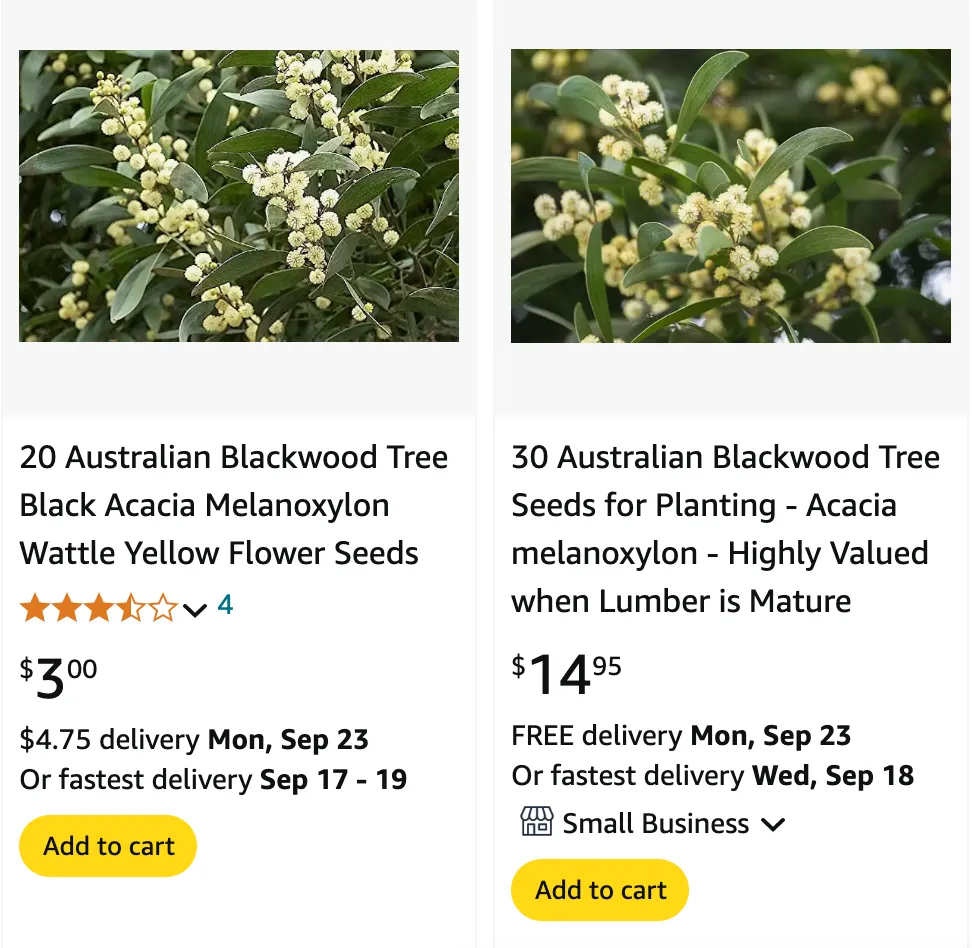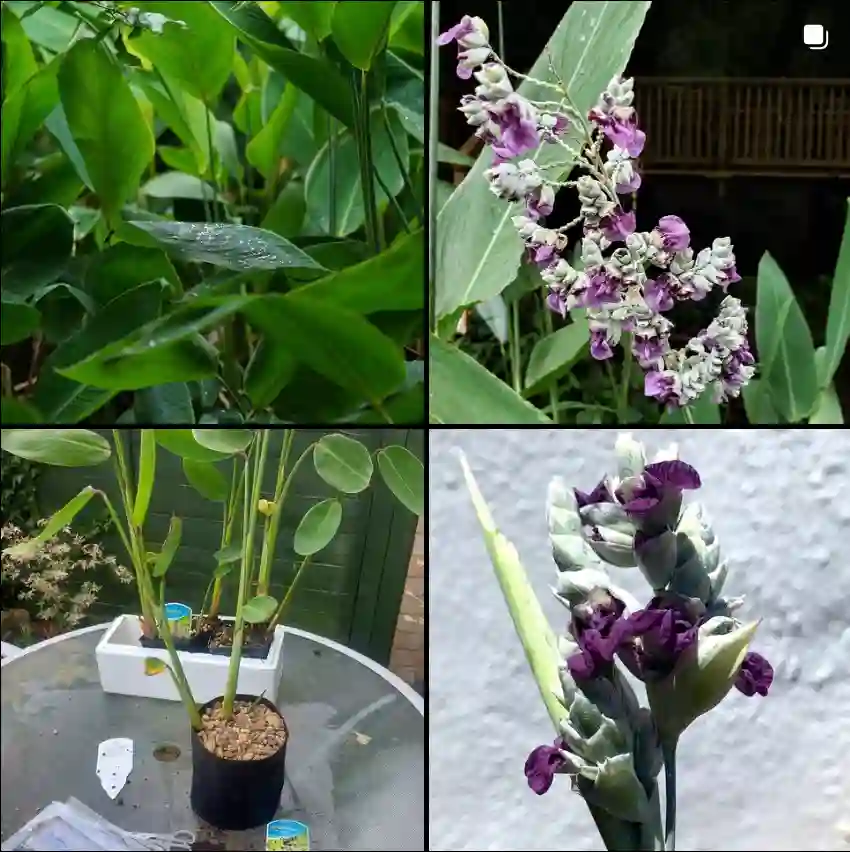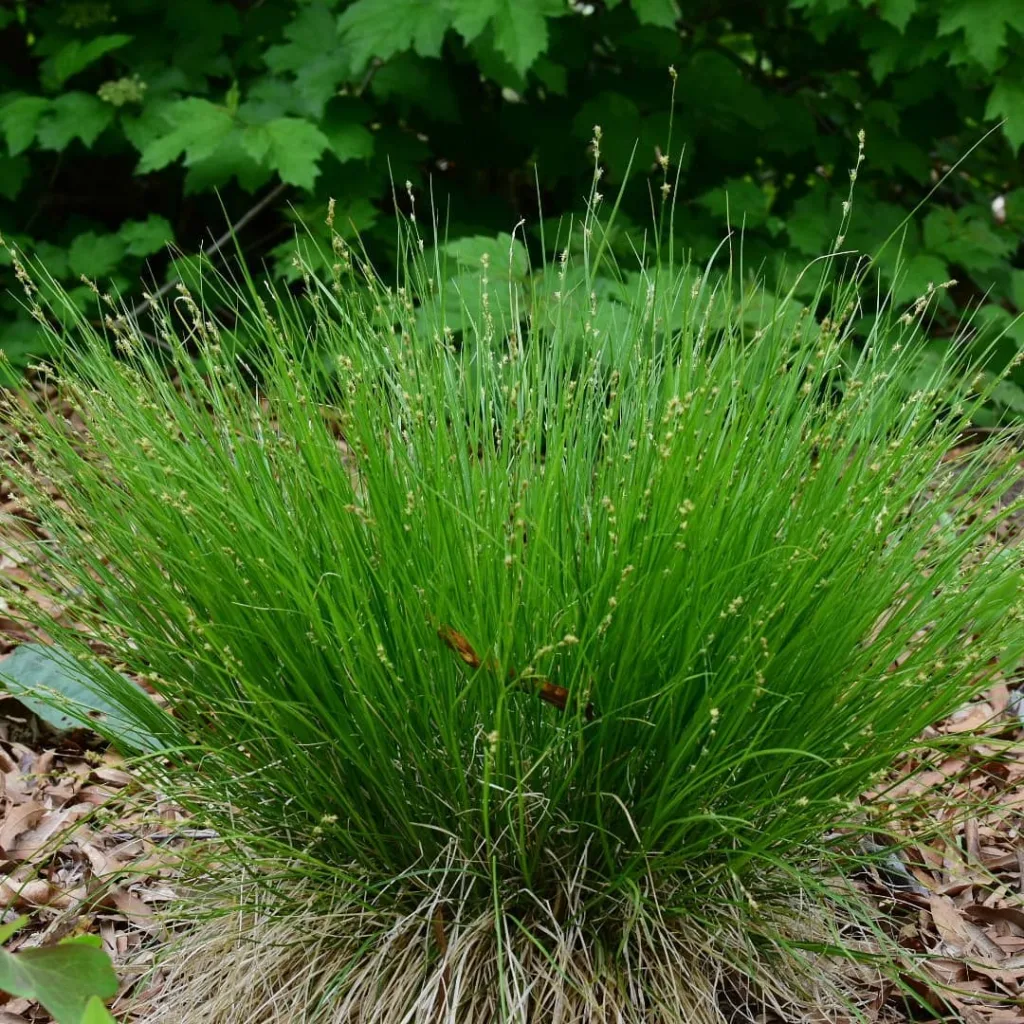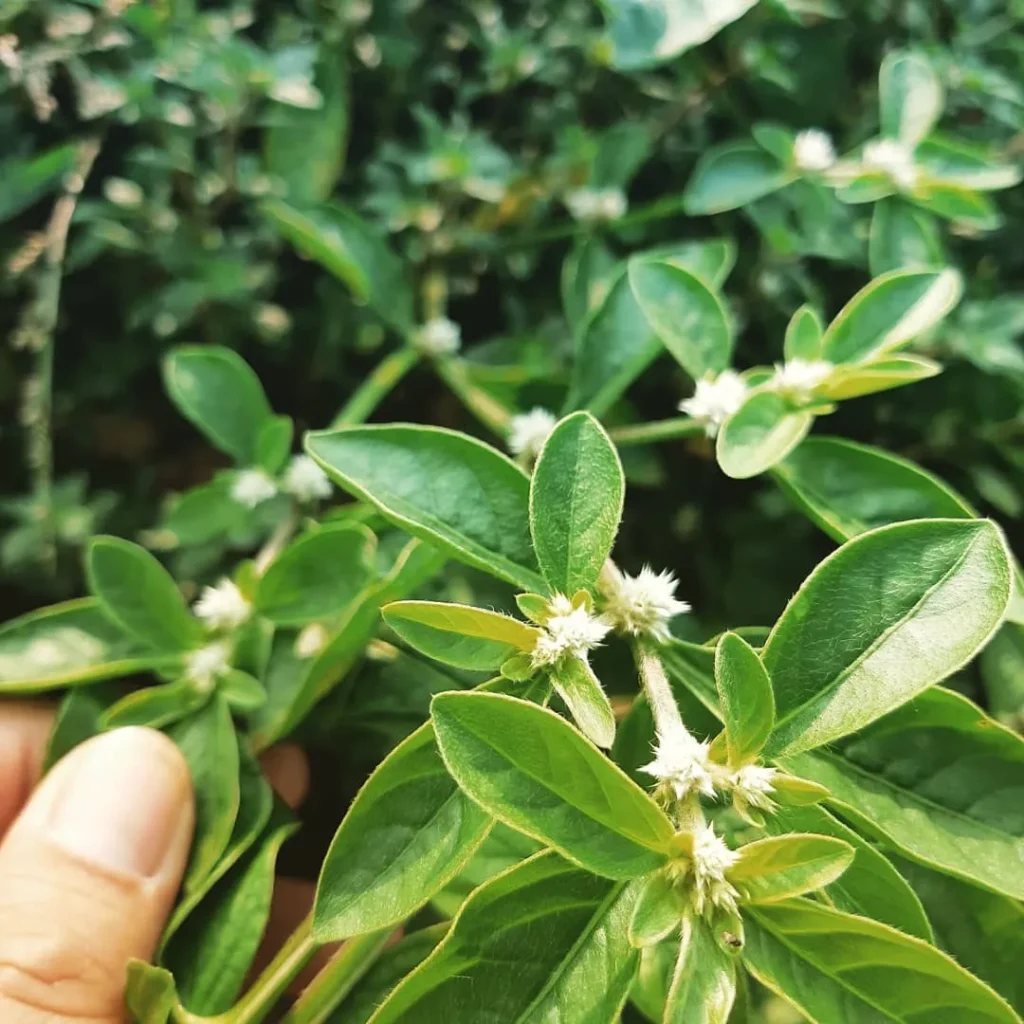
What Is Acacia Melanoxylon?
Acacia Melanoxylon, commonly known as Blackwood, is an Australian native tree known for its striking dark timber and attractive foliage. This tree is a member of the Acacia genus, which encompasses a diverse range of species known for their ecological benefits and aesthetic appeal. Blackwood trees can grow up to 30 meters tall in their native habitat, featuring glossy, dark green leaves and beautiful yellow or cream-colored flowers.
1091 Species in Genus Acacia
Are Acacia Melanoxylon Seeds Edible?
Acacia Melanoxylon seeds are indeed edible but are not commonly consumed. They contain high levels of tannins, which can be quite astringent and may cause digestive issues if not properly prepared. In some cultures, seeds from various Acacia species are roasted or ground into flour, but it’s important to process them correctly to make them palatable and safe to eat. If you’re interested in trying them, make sure to research proper preparation methods to avoid any adverse effects.
Does Acacia Melanoxylon Contain DMT?
Acacia Melanoxylon does not contain significant levels of DMT (dimethyltryptamine), a powerful psychedelic compound found in some other Acacia species. While DMT is present in certain Acacia varieties, Blackwood is not known for having this compound. Therefore, if you’re seeking plants with DMT for their psychoactive properties, Acacia Melanoxylon would not be a suitable choice.
Is Acacia Melanoxylon Good for Stoves?
Acacia Melanoxylon wood is excellent for use in stoves and fireplaces. The timber is dense, burns slowly, and produces a lot of heat, making it a great option for heating. The wood also has a pleasant aroma when burned, adding to its appeal as a fuel source. However, it’s worth noting that because of its density, Blackwood can be harder to split compared to some other types of firewood.
How to Care for Acacia Melanoxylon?
Caring for Acacia Melanoxylon involves several key practices. This tree thrives in well-drained soils and full sun but can tolerate partial shade. Regular watering is important, especially during dry periods, but be careful not to overwater. Pruning is also beneficial to maintain its shape and remove any dead or diseased wood. Fertilizing once or twice a year can help promote healthy growth.
How to Propagate Acacia Melanoxylon?
Propagating Acacia Melanoxylon can be done through seeds or cuttings. For seeds, soak them in water for 24 hours before planting to improve germination rates. Sow the seeds in a well-draining potting mix and keep them warm and moist until they germinate. For cuttings, take semi-hardwood cuttings during the growing season, dip them in rooting hormone, and plant them in a suitable rooting medium. Ensure they are kept in a humid environment until they establish roots.
What to Plant With Acacia Melanoxylon?
Acacia Melanoxylon can be paired with a variety of other plants to create a diverse and attractive landscape. Consider planting it with native Australian species such as Grevilleas, Banksias, or Callistemons to complement its look and provide additional habitat for local wildlife. For a more tropical feel, you might combine it with palms or flowering shrubs.
Can You Grow Acacia Melanoxylon Indoors?
Growing Acacia Melanoxylon indoors is not ideal. This tree requires plenty of space and full sunlight to thrive, conditions that are difficult to replicate indoors. While it may start well in a large pot, its size and growth requirements make it better suited for outdoor environments where it can reach its full potential.
Is Acacia Melanoxylon Toxic?
Acacia Melanoxylon is not generally considered toxic to humans or pets. However, as with many plants, it’s always a good idea to ensure that children and animals do not ingest large amounts of any plant material, as it could lead to digestive upset or other issues. The tree’s primary risk comes from its seeds, which should be properly prepared if consumed.
Benefits of Acacia Melanoxylon
Acacia Melanoxylon offers several benefits. Its wood is highly prized for furniture and flooring due to its durability and beautiful grain. The tree also provides excellent shade and can be used for landscaping to create a lush, attractive garden. Additionally, it supports local ecosystems by providing habitat and food for wildlife.
Common Problems with Acacia Melanoxylon
Common problems with Acacia Melanoxylon include susceptibility to pests such as aphids and scale insects. It may also suffer from fungal diseases if grown in overly wet conditions. Regular inspection and prompt treatment of any issues can help maintain the health of the tree. Additionally, its dense foliage can occasionally lead to issues with light competition for other plants nearby.
Comparing Acacia Melanoxylon with Similar Species
When compared to other Acacia species, such as Acacia dealbata (Silver Wattle) or Acacia pycnantha (Golden Wattle), Acacia Melanoxylon stands out for its dark timber and large size. While other Acacia varieties might be better suited for specific uses or conditions, Blackwood’s unique attributes make it a valuable addition to gardens and landscapes where its characteristics can be fully appreciated.
In summary, Acacia Melanoxylon is a versatile and attractive tree with a range of uses and benefits. Whether you’re interested in its timber, its role in the landscape, or its care requirements, understanding these aspects can help you make the most of this beautiful Australian native.
If i die, water my plants!



